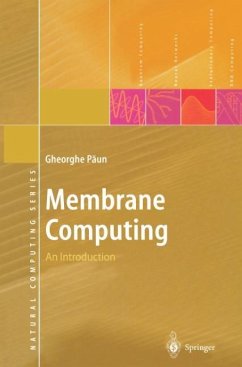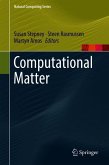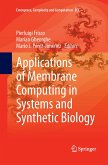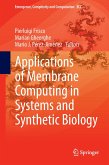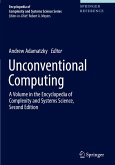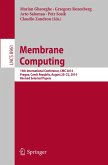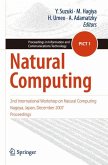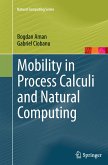Like quantum computing or DNA computing, membrane computing is an unconventional model of computation associated with a new computing paradigm. The field of membrane computing was initiated in 1998 by the author of this book; it is a branch of natural computing inspired by the structure and functioning of the living cell and devises distributed parallel computing models in the form of membrane systems, also called P systems.
This book is the first monograph surveying the new field in a systematic and coherent way. It presents the central notions and results: the main classes of P systems, the main results about their computational power and efficiency, a complete bibliography, and a series of open problems and research topics. Thus, the book is indispensible reading for anybody interested in molecular computing.
This book is the first monograph surveying the new field in a systematic and coherent way. It presents the central notions and results: the main classes of P systems, the main results about their computational power and efficiency, a complete bibliography, and a series of open problems and research topics. Thus, the book is indispensible reading for anybody interested in molecular computing.
From the reviews:
"The subject of this book is the new computing model known as P-systems (honoring the initiator of the model who is the author of this book) and also as membrane systems. ... the book introduces complexity classes of problems that are suitable for membrane systems. It also provides many open problems in such membrane complexity theory. ... The book has extensive references, open problems and many ideas for further development." (Natasha Jonoska, Zentralblatt MATH, Vol. 1034, 2004)
"The subject of this book is the new computing model known as P-systems (honoring the initiator of the model who is the author of this book) and also as membrane systems. ... the book introduces complexity classes of problems that are suitable for membrane systems. It also provides many open problems in such membrane complexity theory. ... The book has extensive references, open problems and many ideas for further development." (Natasha Jonoska, Zentralblatt MATH, Vol. 1034, 2004)

